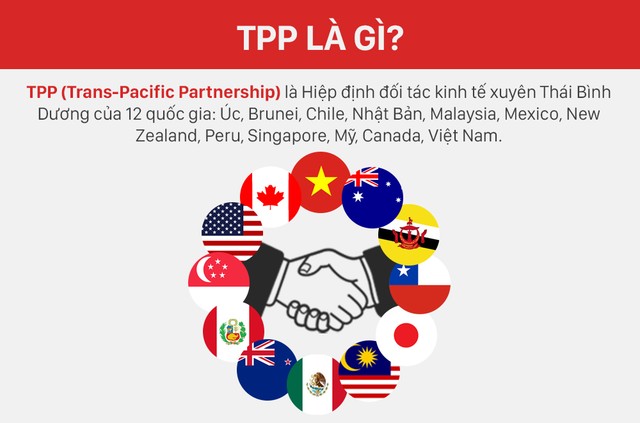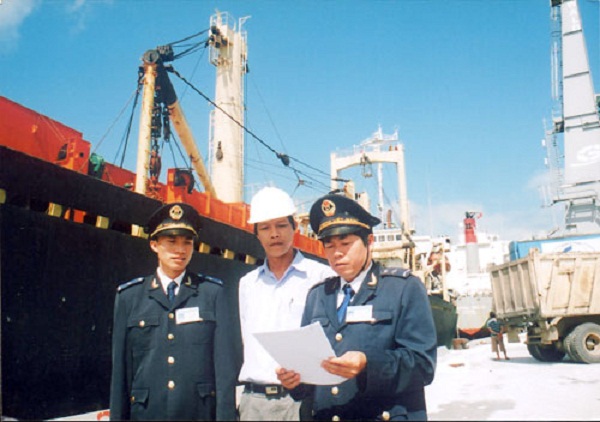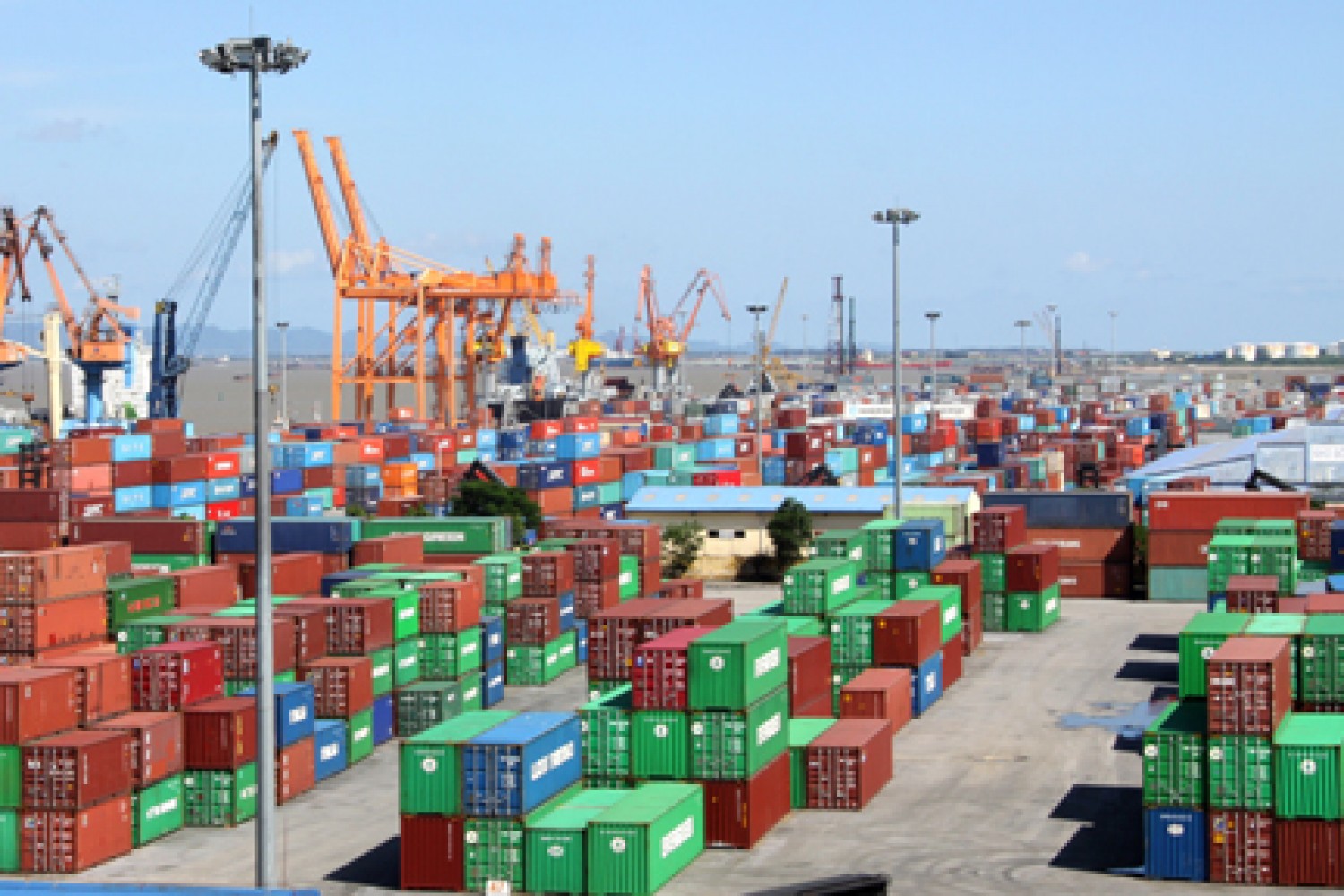TPP - Chapter 25 - Regulatory Coherence
Chapter 25 of the TPP Agreement on Regulatory Coherence concerning the uniform implementation of measures related to the issues stipulated in the TPP Agreement.
CHAPTER 25
REGULATORY COHERENCE
Article 25.1: Definitions
In this Chapter:
a regulatory measure subject to the provisions is a regulatory measure identified by each Party within the scope of this Chapter as stipulated in Article 25.3 (Scope); and
a regulatory measure is a general measure related to issues stipulated in this Agreement adopted by regulatory agencies whose adherence is required by law.
Article 25.2: General Provisions
-
In this Chapter, regulatory coherence refers to the use of good regulatory practices in the process of planning, designing, issuing, implementing, and reviewing regulatory measures to facilitate the implementation of domestic policy goals and to strive through governments to enhance regulatory cooperation to promote goals and facilitate international trade and investment, economic growth, and employment.
-
The Parties affirm the importance of the following:
(a) maintaining and enhancing the benefits of this Agreement through regulatory coherence in facilitating the increase of trade in goods and services and investment between the Parties;
(b) the sovereignty of each Party in determining its regulatory priorities and establishing and implementing regulatory measures to address those priorities, at levels that the Party deems appropriate;
(c) the role of regulation in achieving public policy objectives;
(d) taking into account inputs from interested persons in the formulation of regulatory measures; and
(e) developing regulatory cooperation and capacity building between the Parties.
Article 25.3: Scope
Each Party shall promptly, and no later than one year from the date this Agreement enters into force in its territory, identify and publicly disclose the scope of application of its regulatory measures. When determining the scope of application of regulatory measures, each Party will aim to achieve significant protection.
Article 25.4: Process and Coordination and Review Mechanisms
-
The Parties recognize that regulatory coherence can be supported through mechanisms that enhance inter-agency consultation and coordination linked with the development of regulatory measures. Each Party will strive to ensure it has processes or mechanisms to facilitate effective inter-sectoral coordination and review of proposed regulatory measures. Each Party will consider establishing and maintaining a national or central coordination body for this purpose.
-
The Parties recognize that while the processes or mechanisms described in paragraph 1 may vary among Parties depending on their conditions (including differences in levels of development and political and institutional structures), the Parties need to encompass all of these capabilities:
(a) reviewing proposed regulatory measures to determine the extent to which the development of these measures complies with good regulatory practices, which may include but is not limited to the provisions in Article 25.5 (Implementation of Good Regulatory Practices), and making recommendations based on that review;
(b) enhancing consultation and coordination among domestic agencies to identify potential overlaps and duplications to prevent the creation of inconsistent requirements among agencies;
(c) making recommendations for systemic regulatory improvements; and
(d) publicly reporting on regulatory measures reviewed, proposed systemic regulatory improvements, and updates on changes to the processes and mechanisms described in paragraph 1.
Each Party shall provide documents describing its processes or mechanisms that may be publicly available.
Article 25.5: Implementation of Good Regulatory Practices
-
To support the design of a measure to best achieve its objective, each Party shall encourage relevant regulatory agencies, consistent with its laws and regulations, to conduct regulatory impact assessments when developing proposed regulatory measures exceeding an economic or other regulatory impact threshold, if deemed appropriate by that Party. Regulatory impact assessments may include a range of procedures to determine potential impacts.
-
Recognizing that institutional, social, cultural, legal, and development conditions of the Parties may lead to specific regulatory methods, the regulatory impact assessment conducted by a Party should include the following:
(a) an assessment of the necessity of a regulatory proposal, including a description of the nature and significance;
(b) an examination of feasible alternatives, including, to the extent feasible and consistent with its laws and regulations, their costs and benefits, such as related risks and distributive impacts, acknowledging that some costs and benefits are difficult to quantify and monetize;
(c) an explanation of the rationale for concluding that the selected alternative achieves the policy objectives effectively, including, if appropriate, references to costs and benefits and the potential to manage the risk; and
(d) based on the best reasonably obtainable information, including scientific, technical, economic, or other relevant information, within the boundaries of the authorities, responsibilities, and resources of the specific regulatory agencies.
-
When conducting a regulatory impact assessment, a Party may consider the potential impacts of the proposed regulation on SMEs.
-
Each Party shall ensure that new regulatory measures are written clearly, concisely, organized, and easily comprehensible, recognizing that some measures addressing technical issues may require specialized knowledge for understanding and application.
-
To the extent consistent with its laws and regulations, each Party shall ensure relevant agencies provide public access to information about new regulatory measures, and if feasible, provide this information in an online format.
-
Each Party shall periodically review its regulatory measures to determine whether particular regulatory measures should be modified, streamlined, expanded, or abolished to make regulatory policies more effective in achieving the Party's policy objectives.
-
In an appropriate manner and consistent with its laws and regulations, each Party shall provide annual public notifications about pending regulatory measures expected to be issued within the following 12 months by its regulatory agencies.
-
To the extent appropriate and consistent with its laws, each Party will encourage its relevant legal agencies to consider regulatory measures established by other Parties, as well as relevant developments in international, regional, and other forums, when creating new regulatory measures.
Article 25.6: Committee on Regulatory Coherence
-
The Parties hereby establish a Committee on Regulatory Coherence (hereafter referred to as the Committee), consisting of government representatives of the Parties.
-
The Committee shall consider matters relating to the implementation of this Chapter. The Committee shall also consider defining future priorities, including potential sectoral initiatives and cooperative activities related to issues in this Chapter and related regulatory coherence matters specified in other Chapters of this Agreement.
-
When determining future priorities, the Committee shall consider the activities of other committees, working groups, and subsidiary bodies established under this Agreement and cooperate to avoid duplication of activities.
-
The Committee shall ensure that its work on regulatory cooperation provides value beyond initiatives undertaken in other related forums and prevents the duplication of those efforts.
-
Each Party shall designate and notify a contact point to provide information, as requested by another Party, regarding the implementation of this Chapter in accordance with Article 27.5 (Contact Points).
-
The Committee shall meet within one year from the date this Agreement comes into effect and shall hold subsequent meetings as necessary.
-
At least once every five years from the date this Agreement comes into effect, the Committee shall review developments in good regulatory practices and best practices in maintaining the processes or mechanisms described in Article 25.4.1 (Process and Coordination and Review Mechanisms) as well as the experiences of the Parties in implementing this chapter with a view toward considering recommendations to the Committee for improving the provisions of this Chapter to further enhance the benefits of this Agreement.
Article 25.7: Cooperation
- The Parties shall cooperate to facilitate the implementation of this Chapter and maximize the benefits arising from its implementation. Cooperative activities shall consider the needs of each Party and may include:
(a) exchanging information, dialogues, or meetings with other Parties;
(b) exchanging information, dialogues, or meetings with interested individuals, including SMEs, of other Parties;
(c) training programs, seminars, and related support;
(d) enhancing cooperation and relevant activities among regulatory agencies; and
(e) other activities as agreed by the Parties.
- The Parties continue to recognize that cooperation on regulatory matters between the Parties can be enhanced by ensuring that the regulatory measures of each Party are available centrally.
Article 25.8: Engagement with Interested Persons
The Committee shall establish appropriate mechanisms to provide continuous opportunities for interested persons of the Parties to contribute to matters related to enhancing regulatory coherence.
Article 25.9: Notification of Implementation
-
To ensure transparency and form the basis for cooperation and capacity-building activities under this Chapter, each Party shall submit an implementation notice to the Committee, through designated contact points specified in Article 27.5 (Contact Points), within two years from the date this Agreement comes into effect in its territory and subsequently notify at least once every four years.
-
In its first notification, each Party shall describe the steps it has taken since the date this Agreement came into effect in its territory, and the steps it plans to take to implement the provisions of this Chapter, including steps to:
(a) establish processes or mechanisms to facilitate effective inter-sectoral coordination and review of proposed regulatory measures as specified in Article 25.4 (Process and Coordination and Review Mechanisms);
(b) encourage relevant agencies to carry out regulatory impact assessments under Article 25.5.1 and Article 25.5.2;
(c) ensure that regulatory measures are written and disseminated as specified in Article 25.5.4 and Article 25.5.5;
(d) review regulatory measures as specified in Article 25.6;
(e) provide information to the public in the annual notification of upcoming regulatory measures as specified in Article 25.7.
-
In subsequent notifications, each Party shall describe the steps it has taken since the previous notification, including those provided in paragraph 2 and the steps it plans to take to implement this chapter, and to enhance its participation therein.
-
When reviewing matters related to the implementation and operation of this Chapter, the Committee may consider the notifications made by a Party under paragraph 1. During such a review, the Parties may ask questions or discuss specific aspects of a Party's notification. The Committee may use its review and discussion of a notification as a basis for identifying opportunities for support and cooperative activities to be provided under Article 25.7.
Article 25.10: Relation to Other Chapters
In the event of a conflict between Chapter 25 (Regulatory Coherence) and another Chapter of the Agreement, that Chapter shall apply instead of Chapter 25.
Article 25.11: Exemption from Dispute Settlement
No Party shall have recourse to the dispute settlement provisions under Article 28 (Dispute Settlement) for matters arising under this Chapter.MỤC LỤC
TABLE OF CONTENTS
TPP - Chapter 01 - General Provisions and Definitions
TPP - Chapter 02 - National Treatment and Market Access for Goods
TPP - Chapter 03 - Rules of Origin and Origin Procedures
TPP - Chapter 04 - Textiles and Apparel
TPP - Chapter 05 - Customs Administration and Trade Facilitation
TPP - Chapter 06 - Trade Remedies
TPP - Chapter 07 - Sanitary and Phytosanitary Measures
TPP - Chapter 08 - Technical Barriers to Trade
TPP - Chapter 10 - Cross-Border Trade in Services
TPP - Chapter 11 - Financial Services
TPP - Chapter 12 - Temporary Entry for Business Persons
TPP - Chapter 13 - Telecommunications
TPP - Chapter 14 - Electronic Commerce
TPP - Chapter 15 - Government Procurement
TPP - Chapter 16 - Competition Policy
TPP - Chapter 17 - State-Owned Enterprises and Designated Monopolies
TPP - Chapter 18 - Intellectual Property
TPP - Chapter 20 - Environment
TPP - Chapter 21 - Cooperation and Capacity Building
TPP - Chapter 22 - Competitiveness and Business Facilitation
TPP - Chapter 23 - Development
TPP - Chapter 24 - Small and Medium Enterprises
TPP - Chapter 25 - Regulatory Coherence
TPP - Chapter 26 - Transparency and Anti-Corruption
TPP - Chapter 27 - Administrative and Institutional Provisions
TPP - Chapter 28 - Dispute Settlement
TPP - Chapter 29 - Exceptions and General Provisions
TPP - Chapter 30 - Final Provisions
- Key word:
- Chapter 25
- TPP
- Regulatory Coherence
- TPP Agreement
- Cases of land rent exemption and reduction under the latest regulations in Vietnam
- Economic infrastructure and social infrastructure system in Thu Duc City, Ho Chi Minh City
- Regulations on ordination with foreign elements in religious organizations in Vietnam
- Increase land compensation prices in Vietnam from January 1, 2026
- Determination of land compensation levels for damage during land requisition process in Vietnam
- Who is permitted to purchase social housing according to latest regulations in Vietnam?
-

- TPP - Chapter 01 - General Provisions and Definitions
- 12:10, 11/07/2024
-

- TPP - Chapter 05 - Customs Administration and ...
- 12:10, 11/07/2024
-

- TPP - Chapter 04 - Textile and apparel goods
- 12:10, 11/07/2024
-

- TPP - Chapter 08 - Technical Barriers to Trade
- 12:10, 11/07/2024
-

- TPP - Chapter 07 - Sanitary and Phytosanitary ...
- 12:10, 11/07/2024
-

- Notable new policies of Vietnam effective as of ...
- 16:26, 11/04/2025
-
.Medium.png)
- Notable documents of Vietnam in the previous week ...
- 16:21, 11/04/2025
-
.Medium.png)
- Notable documents of Vietnam in the previous week ...
- 16:11, 02/04/2025
-
.Medium.png)
- Notable new policies of Vietnam to be effective ...
- 16:04, 02/04/2025
-
.Medium.png)
- Notable new policies of Vietnam effective from ...
- 14:51, 21/03/2025
 Article table of contents
Article table of contents
